As a coffee equipment manufacturer, I often see baristas struggle with choosing the right milk pitcher. Using the wrong type can seriously impact your latte art and milk texturing abilities.
The main types of milk pitchers are traditional stainless steel, non-stick coated, Teflon-lined, colored, handled, and handleless variants. Each type serves specific purposes and offers unique benefits for different barista needs and preferences.
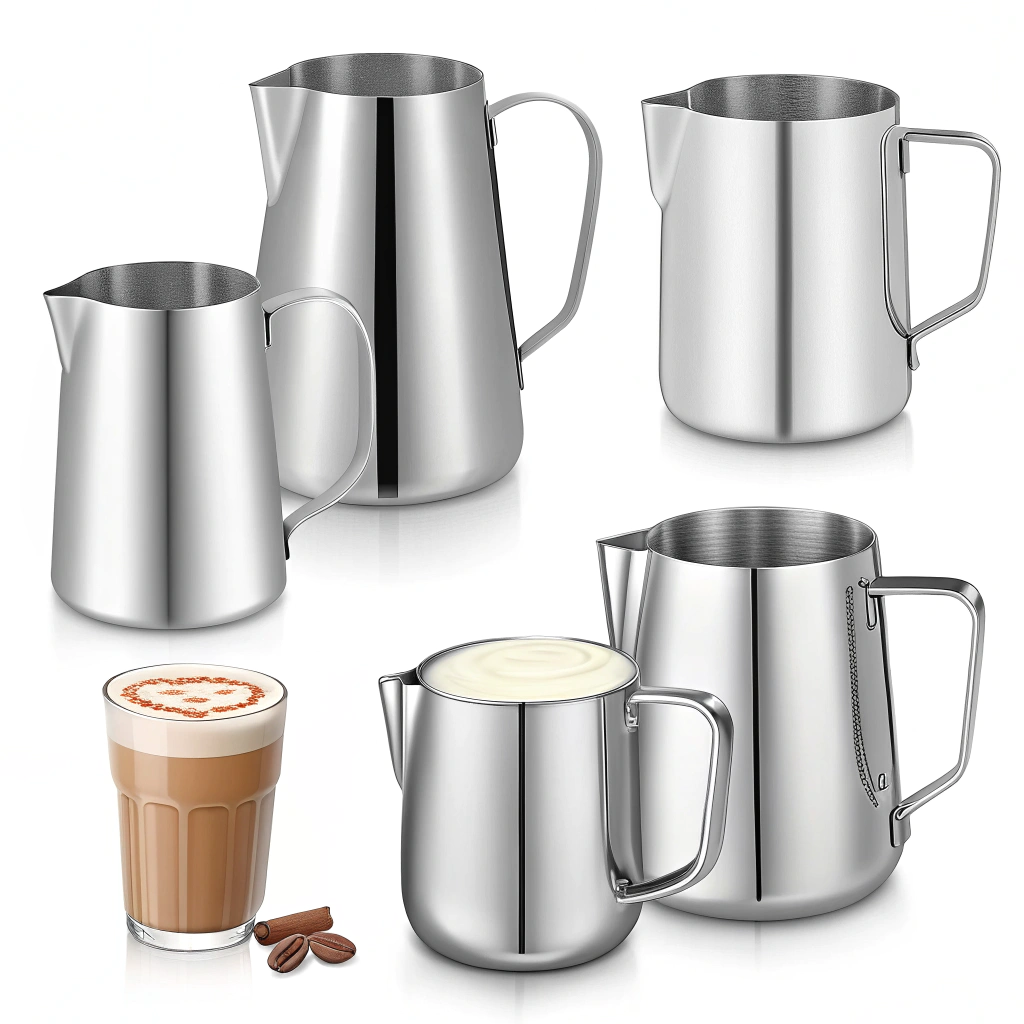
Let me break down each type in detail, drawing from my years of experience working with professional baristas and coffee shops worldwide.
What Makes Traditional Stainless Steel Pitchers So Popular?
Many baristas get overwhelmed by fancy pitcher options, but traditional stainless steel remains the gold standard. I've seen countless cafes stick with this classic choice.
Traditional stainless steel pitchers are durable, maintain temperature well, and offer excellent control for milk steaming and pouring. They're made from food-grade 304 stainless steel, resist corrosion, and can withstand heavy daily use in busy cafes.
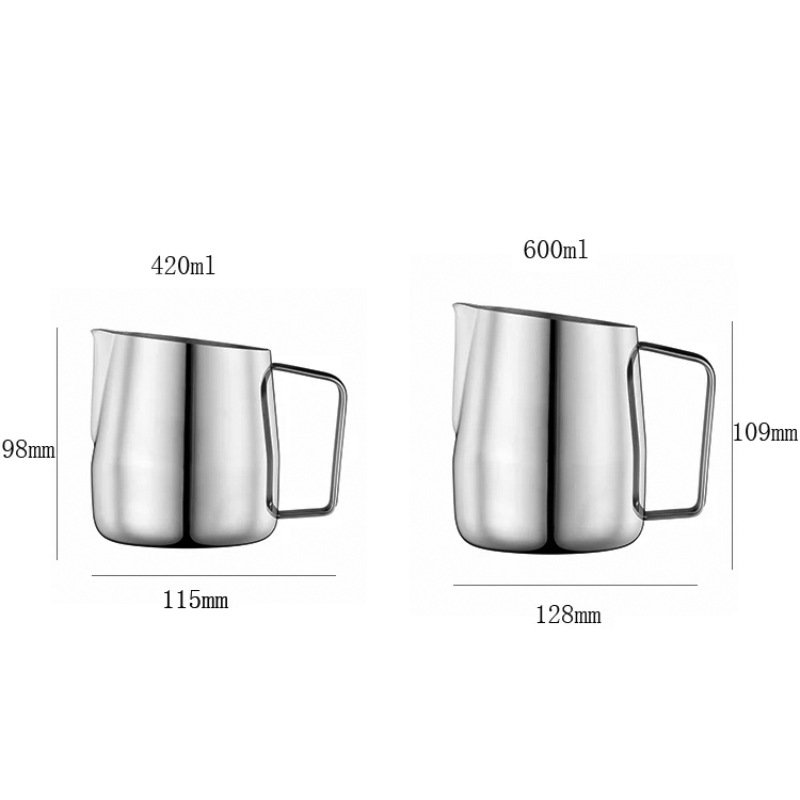
The enduring popularity of stainless steel pitchers stems from several key factors that make them ideal for professional use. Let's examine the specific advantages:
Material Benefits
- Durability: 304-grade stainless steel offers superior resistance to dents and wear
- Heat Retention: Maintains optimal milk temperature longer than other materials
- Hygiene: Non-porous surface prevents bacterial growth
- Easy Cleaning: Smooth surface allows quick washing between uses
Professional Features
- Precise Pouring: Balanced weight distribution aids control
- Temperature Feedback: Allows baristas to gauge milk temperature by touch
- Spout Design: Enables detailed latte art creation
- Cost-Effective: Long lifespan justifies initial investment
What Are the Advantages of Non-Stick and Teflon-Lined Pitchers?
During busy cafe shifts, cleaning milk residue can slow service down significantly. That's where non-stick options come in handy, as I've learned from our customers' feedback.
Non-stick and Teflon-lined pitchers feature special coatings that prevent milk from sticking, making cleaning faster and easier. These pitchers are especially useful in high-volume cafes where quick turnover is essential.
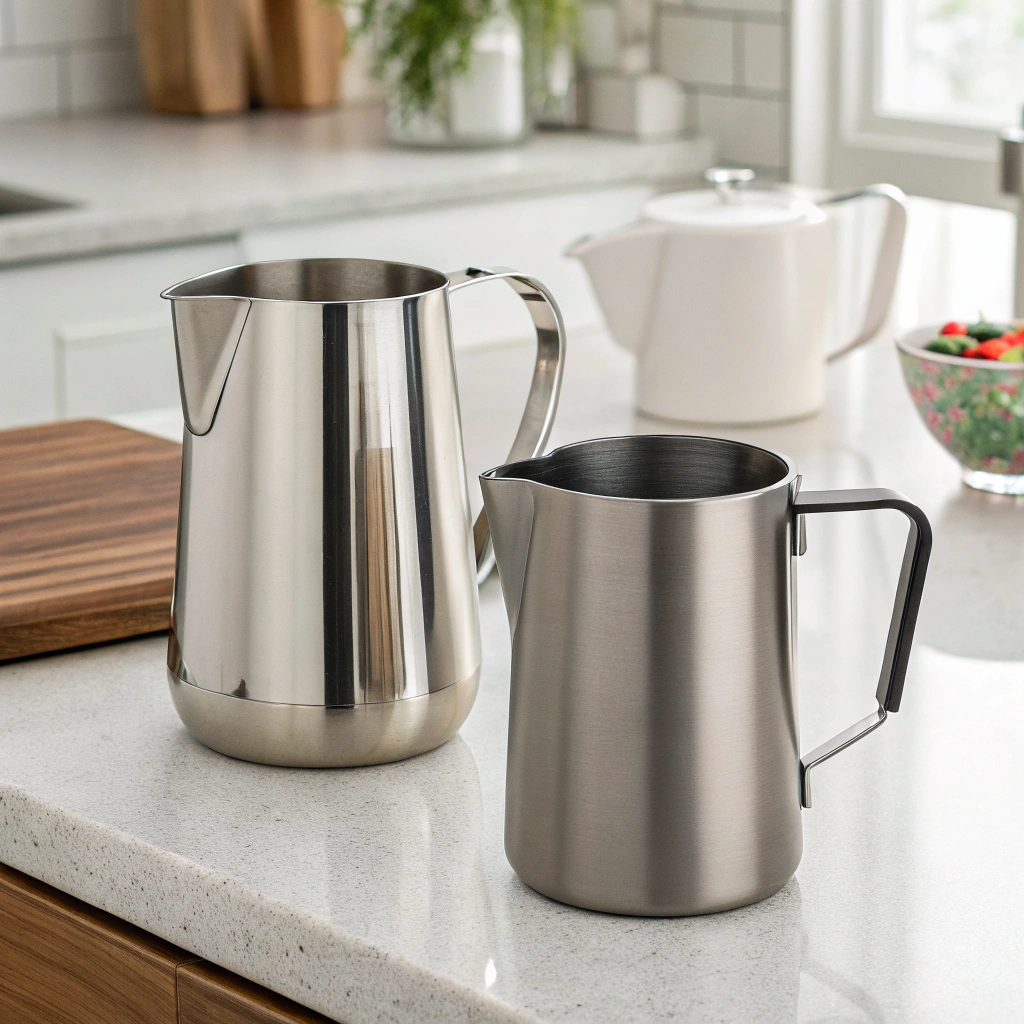
The technology behind non-stick milk pitchers has evolved significantly, offering unique benefits for commercial settings:
Coating Technology
- PTFE (Teflon) Coating:
- Food-safe non-stick surface
- Resistant to high temperatures
- Prevents milk protein adhesion
Practical Benefits
| Feature | Advantage |
|---|---|
| Quick Release | Milk slides off easily |
| Time Saving | Minimal cleaning required |
| Consistency | Maintains performance over time |
| Hygiene | Reduces bacterial growth risk |
How Do Handleless Pitchers Compare to Traditional Handled Designs?
Based on my discussions with professional baristas, the handle vs. handleless debate often comes down to personal preference and pouring style.
Handleless pitchers provide direct temperature feedback and more control during pouring, while handled pitchers offer better grip security and comfort during extended use. Choice often depends on service volume and individual technique.
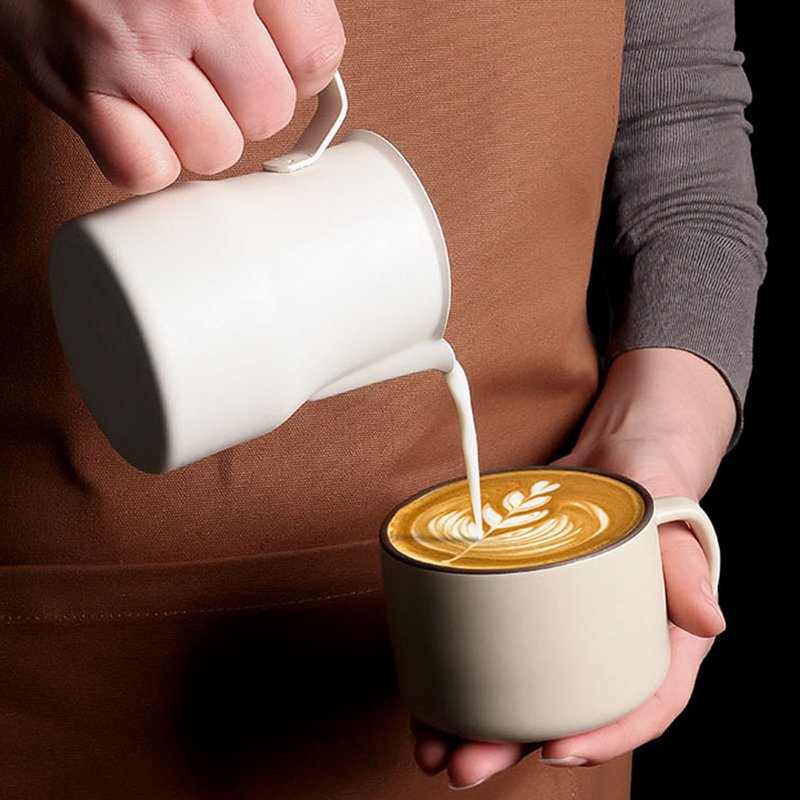
Understanding the ergonomic and performance differences between these designs is crucial for making an informed choice:
Handleless Benefits
- Enhanced temperature sensing
- More precise control
- Improved maneuverability
- Compact storage
Handled Benefits
- Reduced hand fatigue
- Secure grip when full
- Better heat protection
- Traditional familiarity
The choice between these styles often depends on:
- Service volume
- Pouring technique
- Personal comfort
- Storage considerations
Each design has dedicated followers among professional baristas, with many keeping both types on hand for different situations.
What Role Do Colored Pitchers Play in Professional Settings?
In busy cafes, I've noticed that color-coding helps prevent cross-contamination and streamlines service flow, especially with alternative milk options.
Colored milk pitchers help baristas quickly identify different milk types (dairy, soy, almond, etc.), reducing errors and improving efficiency. They're particularly valuable in high-volume operations serving diverse customer preferences.
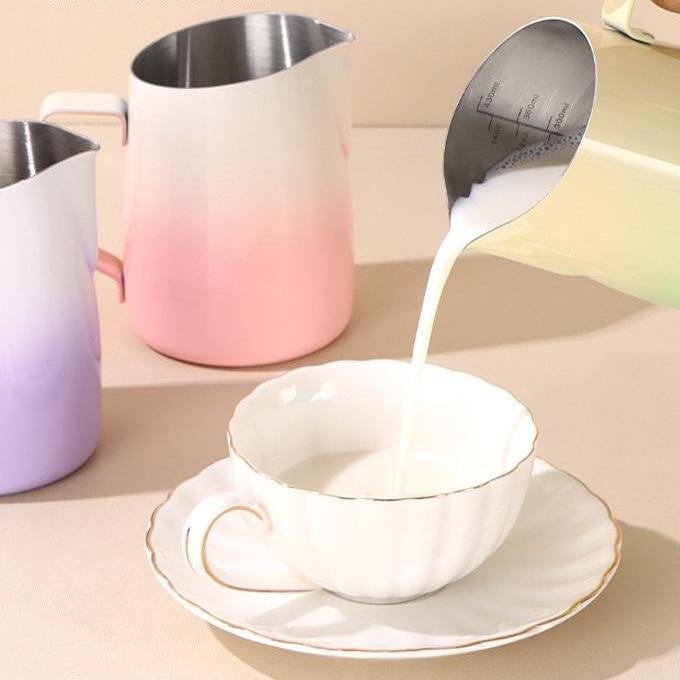
The strategic use of colored pitchers has become increasingly important as cafe menus expand to include more milk alternatives:
Color Coding System
| Color | Common Usage |
|---|---|
| Silver | Regular dairy |
| Blue | Low-fat dairy |
| Red | Soy milk |
| Green | Almond milk |
| Purple | Oat milk |
Operational Benefits
- Prevents cross-contamination
- Speeds up service
- Reduces mistakes
- Helps with allergy management
- Improves workflow organization
Many cafes implement standardized color systems across multiple locations, creating consistent protocols for staff training and service delivery.
The right milk pitcher is essential for delivering consistently excellent coffee beverages. Consider your specific needs, service volume, and team preferences when selecting from these diverse options to optimize your coffee service operations.




